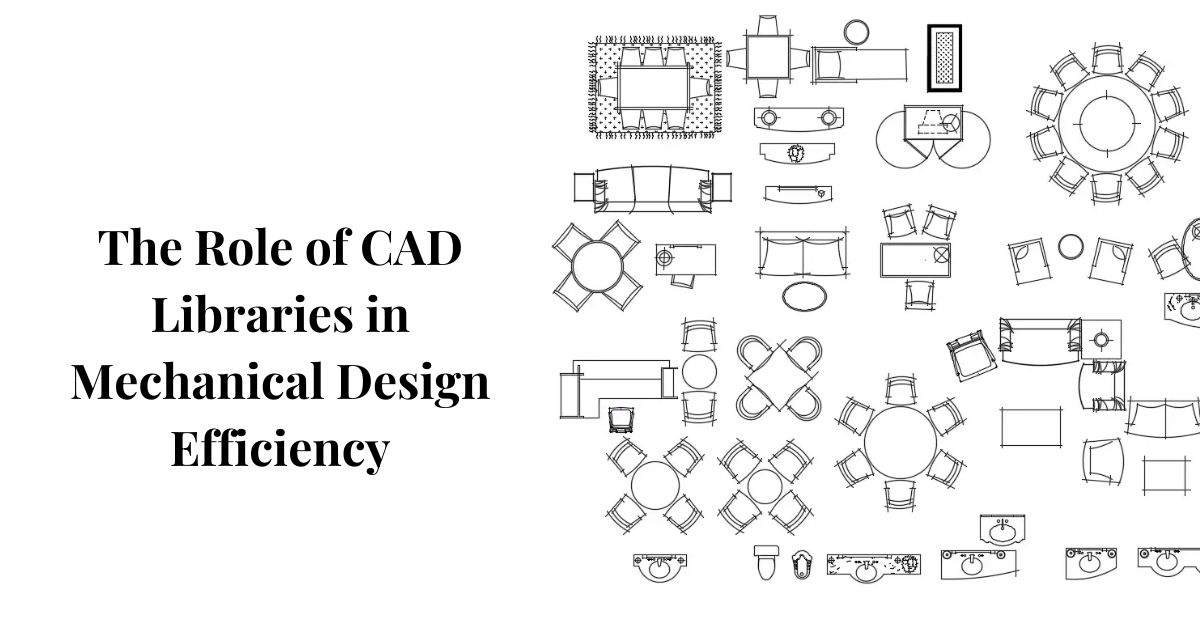In the realm of mechanical engineering and design, the use of Computer-Aided Design (CAD) software has revolutionized the way products and systems are conceptualized, developed, and manufactured. Central to this process is the efficient management and utilization of CAD libraries, which play a pivotal role in enhancing design productivity, standardization, and innovation. In addition to CAD libraries, CAD drafting services streamline the design process by providing specialized expertise in creating detailed drawings and layouts, ensuring accuracy and adherence to industry standards. This article explores the significance of CAD libraries in mechanical design efficiency, highlighting their benefits, challenges, and best practices.
Introduction to CAD Libraries
CAD libraries consist of pre-created components, parts, assemblies, and materials that can be readily accessed and integrated into design projects. These libraries serve as repositories of standardized elements, ranging from simple fasteners and bearings to complex mechanisms and subassemblies. By leveraging CAD libraries, engineers and designers can expedite the design process, reduce errors, maintain consistency, and focus more on innovation rather than reinventing the wheel with each project.
Benefits of CAD Libraries in Mechanical Design
-
Time Savings and Efficiency: One of the primary advantages of CAD libraries is the significant time savings they offer. Instead of starting each design from scratch, engineers can quickly insert pre-modeled components into their assemblies. This not only accelerates the design phase but also allows for rapid iteration and refinement.
-
Standardization and Consistency: CAD libraries promote standardization by ensuring that all design elements meet specified criteria and adhere to organizational standards. This consistency not only improves design quality but also facilitates easier collaboration among team members and across departments.
-
Reduced Errors and Design Validation: By using standardized components from CAD libraries, the likelihood of errors due to incorrect specifications or dimensions is minimized. Furthermore, many CAD libraries are integrated with simulation and validation tools, allowing designers to verify performance and functionality early in the design process.
-
Enhanced Design Reusability: CAD libraries enable the reuse of proven designs and components across multiple projects. Engineers can create libraries of their own frequently used parts or leverage commercially available libraries tailored to specific industries. This reuse not only saves time but also ensures reliability and consistency in design outcomes.
-
Support for Innovation and Customization: While CAD libraries provide standardized components, they also support innovation by freeing up designers’ time to focus on creating new solutions and customizing existing designs to meet unique project requirements. This balance between standardization and customization is crucial for fostering innovation in mechanical design.
Challenges in Utilizing CAD Libraries
Despite their numerous benefits, CAD libraries also present challenges that need to be addressed for optimal utilization:
-
Library Management: Managing a CAD library requires careful organization and maintenance to ensure that all components are up to date, accurate, and compatible with current software versions. This includes version control, metadata management, and regular updates.
-
Quality and Reliability: The quality and reliability of components in CAD libraries vary depending on their source. Engineers must vet the integrity of library components to avoid using outdated or inaccurate models that could lead to design errors.
-
Integration with Design Workflow: Integrating CAD libraries seamlessly into the design workflow requires training and adaptation to new tools and processes. Designers must be proficient in navigating and searching libraries to maximize efficiency.
-
IP Protection and Security: Organizations must also consider intellectual property (IP) protection and data security when using CAD libraries, especially when incorporating third-party components or proprietary designs.
Best Practices for Optimizing CAD Library Usage
To maximize the benefits of CAD libraries and overcome potential challenges, consider the following best practices:
-
Establish Standardization Guidelines: Define clear guidelines for component selection, naming conventions, and metadata to ensure consistency and ease of use across design teams.
-
Regular Maintenance and Updates: Implement a process for regularly reviewing and updating CAD libraries to include new components, eliminate obsolete ones, and ensure compatibility with the latest software versions.
-
Training and Skill Development: Provide training and ongoing support for engineers and designers to enhance their proficiency in using CAD libraries effectively.
-
Collaboration and Knowledge Sharing: Foster a culture of collaboration and knowledge sharing within the organization to encourage the creation and sharing of best practices, tips, and custom libraries among team members. CAD drawing services also play a crucial role in this collaborative environment, translating conceptual designs into detailed technical drawings that facilitate effective communication and implementation across teams and projects.
-
Integration with PLM and ERP Systems: Integrate CAD libraries with Product Lifecycle Management (PLM) and Enterprise Resource Planning (ERP) systems to streamline data management, procurement, and manufacturing processes.
Future Trends and Innovations
Looking ahead, the role of CAD libraries in mechanical design is expected to evolve with advancements in technology and industry practices. Future trends may include:
-
AI-driven Component Selection: AI algorithms could assist in recommending the most suitable components based on design requirements and performance criteria.
-
Cloud-Based Libraries: Cloud-based CAD libraries offer scalability, accessibility, and real-time updates, enabling global collaboration and improved version control.
-
Generative Design and Additive Manufacturing: CAD libraries may integrate generative design algorithms and support for additive manufacturing processes, facilitating the creation of complex geometries and optimized designs. 3D CAD services complement this by providing the capability to visualize and simulate these intricate designs, ensuring they meet functional and manufacturing requirements before production begins.
In conclusion, CAD libraries are indispensable tools that enhance mechanical design efficiency by promoting standardization, reducing errors, supporting innovation, and facilitating design reuse. By implementing best practices and staying abreast of emerging trends, organizations can leverage CAD libraries to achieve faster time-to-market, improved design quality, and sustained competitive advantage in today’s dynamic engineering landscape.













